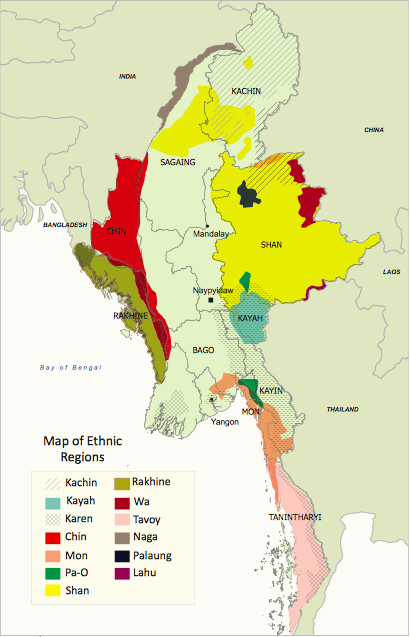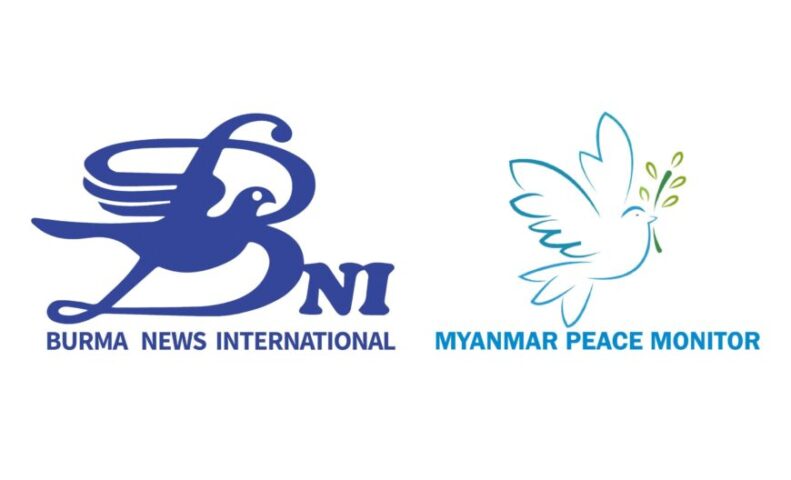| Myanmar officially recognises 135 distinct ethnic groups, which are grouped into 8 major national ethnic races. The non-Burman population makes up 32% of the country’s total population.
The conflict between the diverse multi-ethnic population is a deep rooted problem in Myanmar, dating back to British colonialism. The large number of foreign nationals, namely Indians and Chinese settling in the country, have long been the target of nationalist hatred. Today Indians make up 2% of the total population, while Chinese make up 3%.# Their significant presence and the immense wealth and power that some accumulated was seen as unfair dominance at the expense of locals. The racial tension and violence in Rakhine state also stems from racial resentment of Rohingyas, seen to be illegal Muslim immigrants from Bangladesh. However the issue remains controversial as some claim that they are indigenous to the northern part of Arakan state bordering with Bangladesh. Under the British administration, ethnic nationalities were also given favorable treatment over the majority Buddhist Burman population for their compliance with the colonialists. In particular many were given high ranking positions in the military, which may explain the origins of the military power and skill that many ethnic militia groups possess. Civil war between ethnic nationalities with the Burman-led independent government broke out shortly after independence in 1948, making it the longest civil war in the world today. The inability of the then civilian government led by U Nu in dealing with a country on the brink of collapse led to the military takeover of the government by Ne Win in 1962. The ethnic problem is hence the military’s sole claim to legitimacy and entrenchment in government. This also explains why solving the ethnic problem remains a key to ensuring long lasting peace and democracy in the country. |
 |
MENUMENU
- Data
- Peace Process
- EROs Profiles
- All Burma Students’ Democratic Front (ABSDF)
- Arakan Liberation Party/Army (ALP/ALA)
- Arakan National Council/ Arakan Army (ANC/AA)
- Chin National Front (CNF/CNA)
- Democratic Karen Benevolent Army (DKBA)
- Kachin Independence Army (KIO/KIA)
- Karenni National Progressive Party (KNPP/KA)
- Karen National Union (KNU)
- Karen National Liberation Army – Peace Council (KNU/KNLA PC [KPC])
- Kuki National Organization (Burma)
- Lahu Democratic Union (LDU)
- Myanmar National Democratic Alliance Army (MNDAA)
- National Democratic Alliance Army-Eastern Shan State (NDAA-ESS)
- New Mon State Party (NMSP)
- National Socialist Council of Nagaland-Khaplang (NSCN-K)
- Pa-Oh National Liberation Organization (PNLO)
- The Palaung State Liberation Front (PSLF/TNLA)
- The Restoration Council of Shan State (RCSS/SSA – South)
- Shan State Progress Party/Shan State Army (SSPP/SSA – North)
- United League of Arakan/Arakan Army (ULA/AA)
- United Wa State Party (UWSP/UWSA)
- Peace Agremeents
- Statements
- Myanmar Political Background
- Peace Process Background
- Myanmar Peace Process Grand Chart
- Government peace plan
- Ethnic Peace Plan
- Ceasefire Agreements
- UPC – 21 Century Panlong Conference
- Peace Meetings
- EROs Profiles
- News
- Interviews
- Resources
- Publications
- Acronyms List
- Archives
- Conflicts, Communal Violence and IDPs
- BNI-MPM Reports
- Negotiation Timeline
- Ceasefire Terms
- Ceasefire Implementation
- Mediators
- Prospects for Peace
- Rakhine State Crisis Efforts
- Increasing Drug Trade
- Domestic and Regional Insecurity
- Human Rights Violations
- Border Guard Force Scheme
- Elections, Transition and Conflict
- BGF and resumption of conflict
- Conflict-Linked drug trade threatens Myanmar Peace
- About Us
